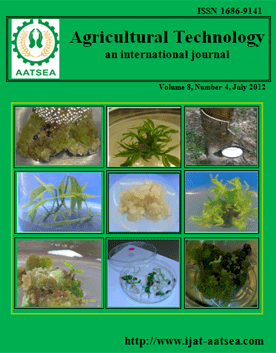ThaiScience
ThaiScience
INTERNATIONAL JOURNAL OF AGRICULTURAL TECHNOLOGY
Volume 16, No. 03, Month MAY, Year 2020, Pages 619 - 628
A survey on acid hydrolysis in analyzing the monosaccharide composition of exopolysaccharide from ophiocordyceps sinensis
Hang, L. T. T., Chau, H. B., Nam, T. V. H., Phu, D. H., Hiep, D. M. and Thang, N. T.
Abstract Download PDF
Exopolysaccharide (EPS) is a heterogeneous group of polysaccharides which has diversed biological activities; in which monosaccharide composition is one of the crucial factors determining the biological activity of EPS. In the analysis of monosaccharide composition by GC-FID technique, the determination of proper acid is a significant step to help cut the glycosidic bond which is less stable in an acidic environment, great hydrolysis of polysaccharide chain to monosaccharide level, to form Acetyl derivatives. The hydrolysis ability of 3 acids: H2SO4, HCl, and Triflic acid for hydrolyzing EPS of Ophiocordyceps sinensis (O. sinensis). Hydrolysis ability was assessed by thin-layer chromatography and highperformance liquid chromatography (HPLC), then the product was treated by acetylation and finally analyzed by GC-FID to determine the monosaccharide composition of the EPS. The results showed that hydrolysis by H2SO4 gave higher hydrolysis efficiency and was more suitable than hydrolysis by HCl and Triflic acid in the pretreatment of EPS sample for monosaccharide composition analysis by GC-FID. H2SO4-treated EPS detected 5 types of monosaccharides: rhamnose, arabinose, mannose, glucose, and galactose; mainly mannose, galactose, and glucose; mannose portioned the highest percentage. The study has set the fundamental for further analysis of the chemical structure and biological activities of EPS.
Keywords
EPS, Hydrolysis, GC-FID, HPLC, Monosaccharide, Ophiocordyceps sinensisINTERNATIONAL JOURNAL OF AGRICULTURAL TECHNOLOGY
Published by : Association of Agricultural Technology in Southeast Asia (AATSEA)
Contributions welcome at : http://www.ijat-aatsea.com
